Trip Report April 21-26/27

Thursday morning started with an email from SEA World Headquarters saying something had happened in the Seaman’s rig and it needed attention. We would still gather at 2:00 pm on the ship, and stay aboard until something became clear. I also got a phone call to make certain I had read my email, and they were still expecting me.
Participants straggled onto the dock, and onto the Seaman’s deck between 1400 and 1500 hr. After rapid covid tests to ascertain we were healthy, we were allowed to take our gear below and stow things. We mustered (there were a lot of bad puns about mustered on the quarterdeck, and relish the moments and take time to ketchup) and heard the actual news. The tang where the forestay attaches to the foremast had a large crack in it, and it needed to be cut out, replaced, and certified fixed by the Coast Guard. The hope was that it could be done in two or three days, leaving us some time to actually set sail. The worst case was that we’d be dockside for the “trip” and figure out other things to do.
The participants were a mixed lot. We had a couple guys from the earliest days of the program in 1972, then me, then a handful of people from later on with the old ship and some from the newer ones. In my bunk alley I had someone who sailed in 1980 and did microbiology, and a guy from the early 2000’s who had been a student and then deckhand and asst engineer, and graduated to work at Space-X doing non-destructive testing. He wound up being a great resource for the people looking at how the tang came to be cracked. Everyone had a fascinating backstory, it was pretty cool.

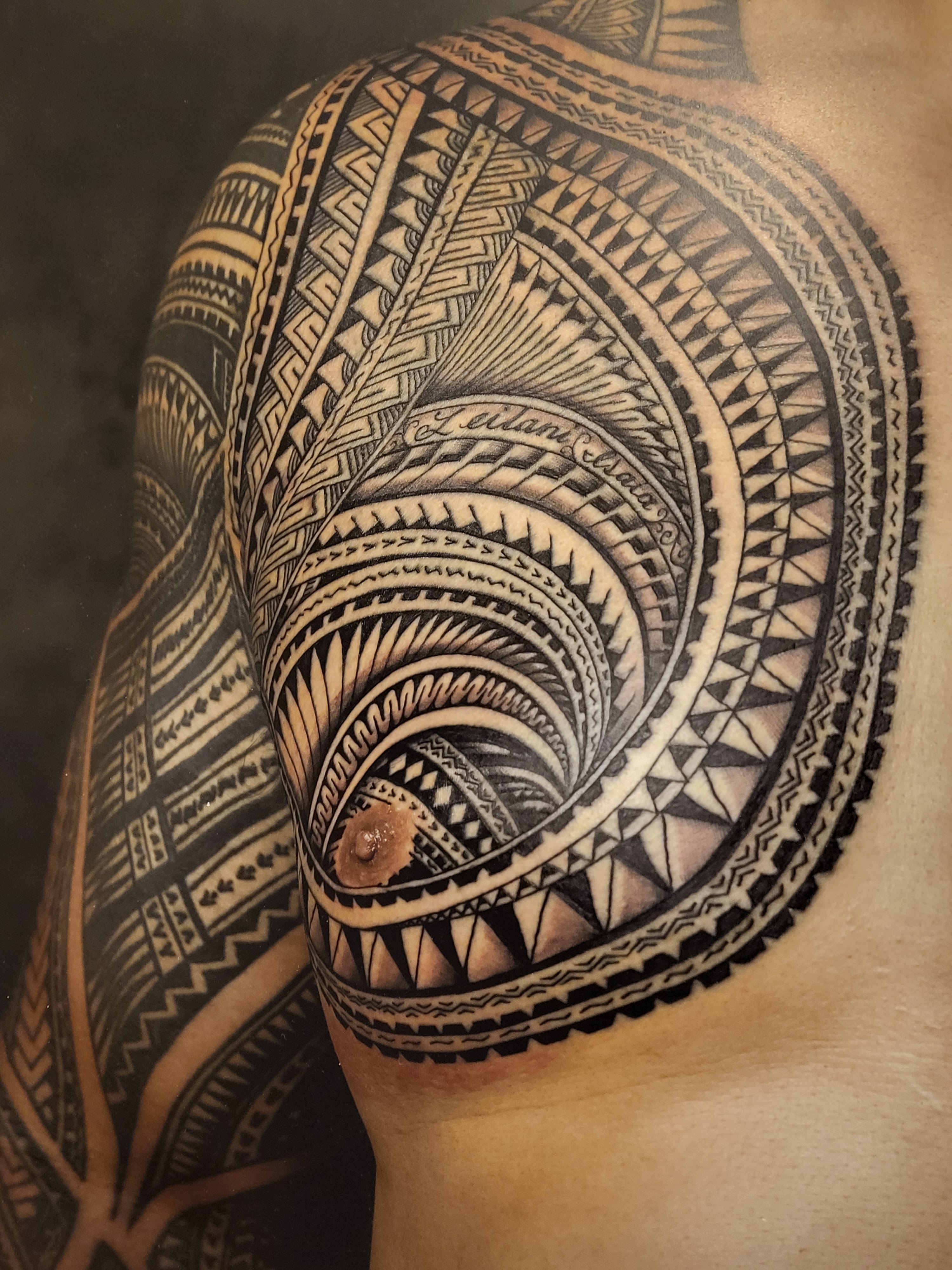

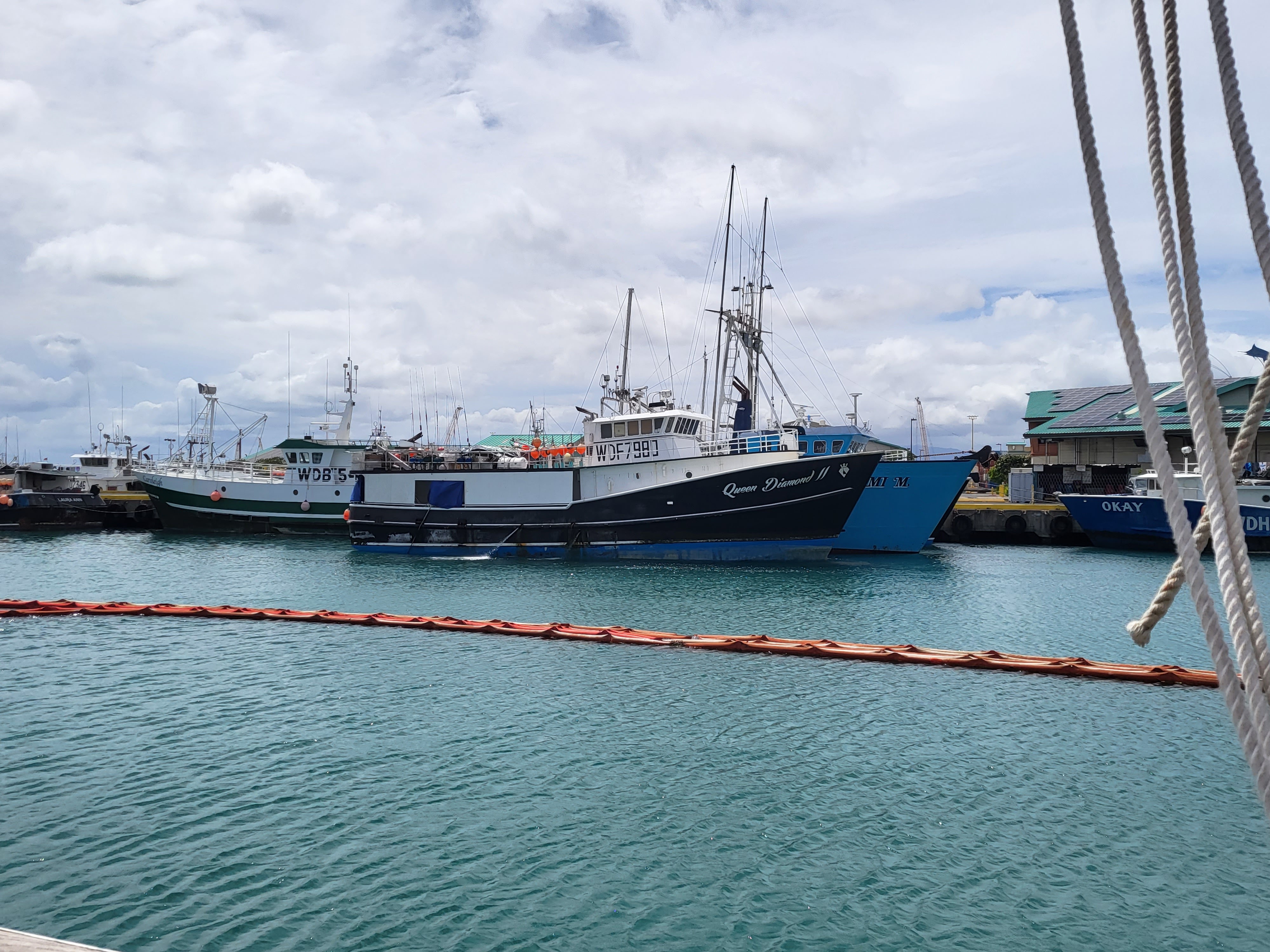




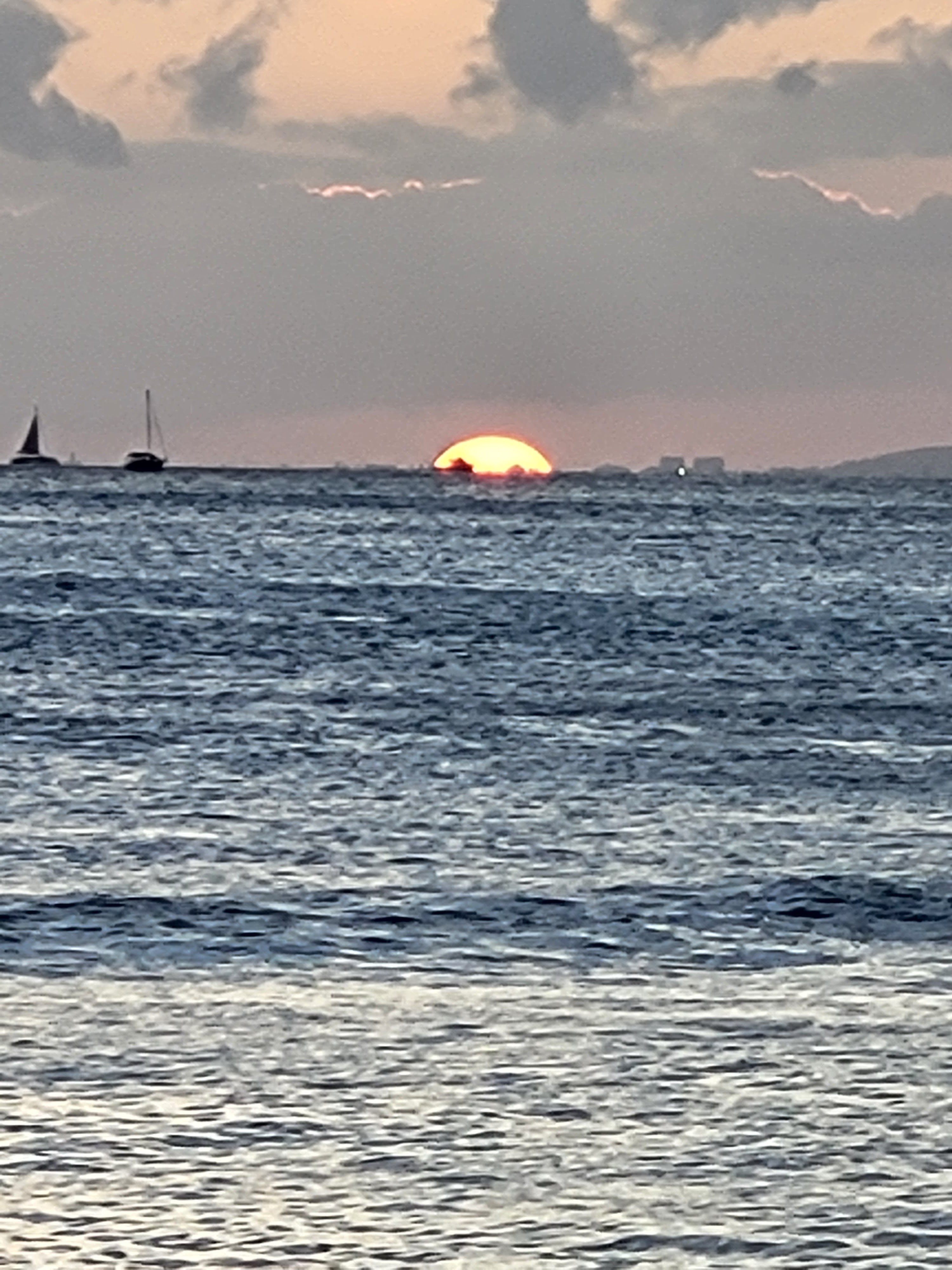
We spent a long day Friday doing basic stooging about and orientation things, and also spending a lot of time staring up at the guys trying to drive the cherry-picker so they could reach the rig. Towards afternoon, there were tours of the lab, the engine room, and a talk on current and proposed programs for students. Seeing the newer technology fitted into a purpose built lab was delightful after my memory of being wedged into a corner of an after-thought deck house with everything sloshing about. The engine room was an enormous maze that existed under the sole of most of the living space – there were two generators, a main engine, an auxiliary engine, a watermaker/desalinator and some additional bilge pumps. It was not a quiet ship! The generator was always going, driving fans and ventilation and also the fridge (for some reason called a reefer on a ship), freezer and hardware in the lab.
Saturday morning it became clear that the repairs would not be accomplished before we were due to leave the ship. At that point, participants began seeping away if they had other places they could go, or things they wanted to do. I wanted to stay on the ship, in part because I like staying on ships, and in part because the community was compelling. The trip was declared a Port Stop, a very loose watch schedule was established, with no assumption that participants needed to be awake if they chose not to, and Monica was named Cruise Director in charge of Amusements. A handful of vans were rented to take people indifferent directions, and many plans were laid.
I went first to the Bishop museum, a curious place with Victorian era collections bearing a more recent gloss of multiculturalism and a valiant attempt to talk more about how the island had functioned before being colonized. There was also a paper mache whale, with the skeleton visible from the near side, and a bunch of very dusty and moth-eaten birds hanging in the center of the larger Hawaiian Hall. The part I found most engaging was the special exhibit of Polynesian tattoo art, including some of the families that had practiced for centuries and the patterns they had developed and handed down.
We ended the day with a glorious sunset, shown above.










Sunday was declared a free day for everyone. Crew organized themselves into two vans and went one one direction, participants organized themselves into two vehicles and went another direction. We stopped in Hale-Iwa for smoothies and to admire a bridge. We then went further north along the coast to Shark Cove, which was actually an extremely large tide pool, roughly waist deep, filled with tourists snorkeling for the first time, and about fifteen fish; one very large blue/silver one, four smaller yellow, white and black stripy guys and a small flock of thumb sized silver ones. Mostly what one saw underwater were people’s legs, or other people snorkling towards you. Every couple of minutes, a large wave would break over the rock reef along the outside edge of the pool, and it would look like waterfalls, cascading in. A food truck lunch was delicious, the fish tacos spectacular, but also utterly unlike Capt. Jack’s.
In the afternoon we travelled a little farther north to see the Pipeline, a classic big wave beach where we watched surfers. We were forbidden to go in the water there because it was frequently so hazardous, but we found out later that surf season and whale season overlap and both were finishing up.
A pair of brothers who had left the ship the night before had found a small boat for an evening sail, and I managed to tag onto them. Saturday afternoon found us on a 40’ trimaran captained by a very well travelled individual who had grown up in Marion, Mass, and sailed back and forth across the Pacific in this boat and also all through Polynesia. The first thing he said was that he’d almost bought Westward, which brought a roar of amusement from all of us, and we spent the trip swapping stories about boats and sailing and captains and ports – just that connection would have made it a very fine sail, but we also had perfect weather and saw whales and a flying fish and an albatross and a red footed booby and a shearwater and a sunset. The whales were humpbacks, here for calving and then back to northern waters to bulk up again. The capt and his crew had recorded some of the whale “songs” and were playing them for us, identifying different voices. One was a baby, babbling… there would be some adult warbling and the babby would sing “woo-hoo!” and this repeated a couple times, getting funnier each time. We finished the evening at a moderately fancy restaurant, and discovered the waiter knew Captain Porter, and more stories ensued. That was a very good day. It fulfilled my internal requirement that I spend some time ON the Pacific ocean as well as in the shallows of it, and we did sail, and sail happily.

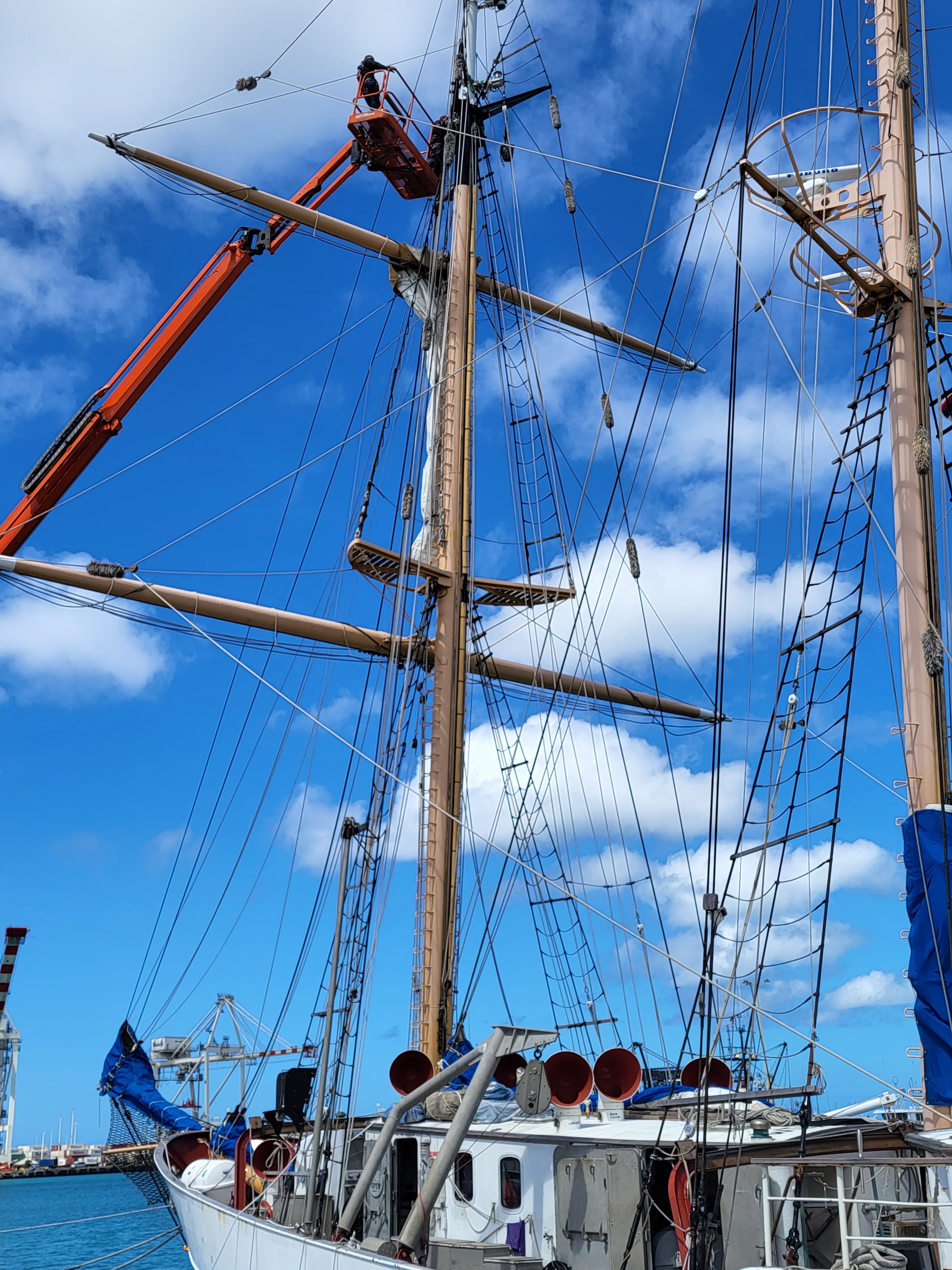

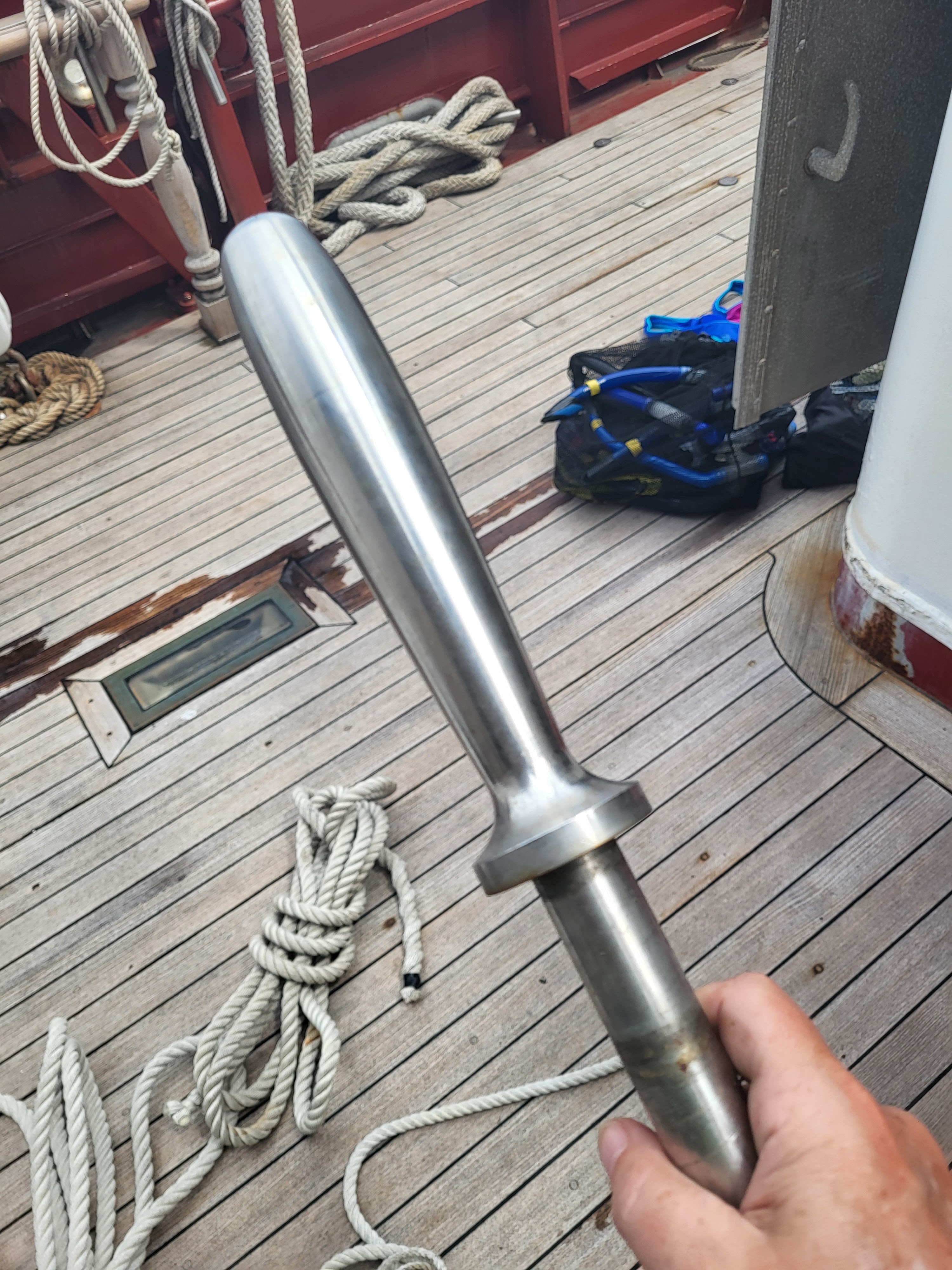


Unfortunately the all the sun on Sunday gave me a migraine Monday, so I stayed on the ship and ghosted about, thinking about quiet things. The metal fabricators came and cut off the tang with the crack, a very heavy-duty piece of metal. I did help with the provisioning – a Sysco truck arrived with boxes of things to be refrigerated, and we lined up and got them onto the ship, out of their cardboard and into the reefer as quickly as possible. I put some paint on canvas, and stared at the water, the port and the idea of ships resting before heading out to sea. We finished Monday night with dinner for everyone at a local restaurant, hosted by SEA. We ate like kings, and were riotously funny. I skipped out a little earlier, with some of the crew, and slept early. T
One of the best things I did while I was on the ship was sign up to stand a watch. At dock, everyone takes a single hour watch, to keep people off the ship, and do a boat check. Boat check is exactly what it sounds like. A trip up and down the decks, checking on dock lines for chafe, making sure the anchors are still there, that there’s no fuel in the cofferdam, the lab cooling is working and nothing is leaking or spilling water or fuel or noxious chemicals on the deck. Then below to check for leaks in the heads and showers, make sure everything is turned off in the galley, no extra water in the bilge, especially in drystores. Finally the engine room, checking on the outputs from the generator, temperatures for anything running, water in these bilges, and that the watermaker is running properly. I signed up for the 1-2am hour each night, and got a chance to stumble about the ship in an official fashion. Even better, I got a chance to visit quietly with a different member of the crew each night. It is a good hour for just talking, and I felt grateful to these people for letting me share their time. They said they were pleased to have company. The watches were some of my favorite moments.
Tuesday we were fed breakfast, thanked and sent ashore. Some of us didn’t have places to be until later in the day, so we were allowed to leave our gear on the ship. I explored a little bit of the terrain around the docks – a very different part of Honolulu than Waikiki! – and was invited to lunch with Peg Brandon, current SEA president but also past captain, past head of marine operations and also for a different interim, head of Maine Maritime, and the two oldest past students. We had a funny lunch talking about Westward, and how things had changed just from the very first trip with Cory Cramer to the time I went, and later, Peg’s experiences as a student and then in charge.
The last shuttle from the ship took me to the airport, and the rest is just complaining about flying these days. I had seven hours from Honolulu to Chicago (arriving at 6am) then a layover and my flight to Bradley, arriving at noon Wednesday. I slept that afternoon, slept most of Thursday, and managed to get up at a reasonably civilized hour Friday morning, whereupon I sat down to write all this.
In short, it was a very good trip; even if nothing actually went as planned, nothing was as bad as I was dreading either. The participants were uniformly smart and interesting, the crew was delightful, the ship relatively comfortable, and the entire process was definitely an adventure.